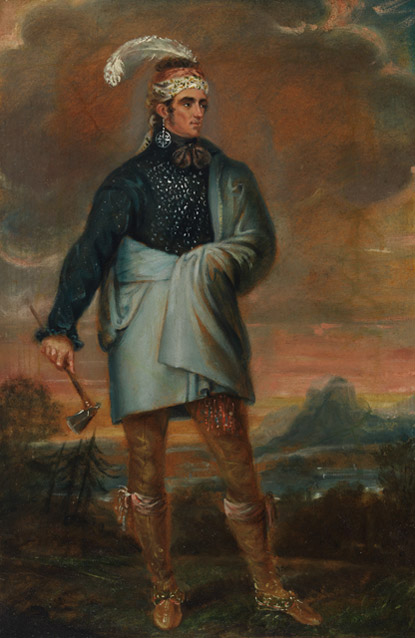It was true during the War of 1812, and remains so today. There is no guarantee that personal, political, and ethnic loyalties match international borders.
Unresolved by the Treaty of Ghent that ended the War of 1812, borderland conflict between the United States and Canada flared into occasional violence from Maine to Oregon and along the Niagara Frontier.

CWM 19950096-001, Beaverbrook Collection of War Art, ©Canadian War Museum
Irish immigrants to North America served in both the US and British armies. French Canadians filled the ranks of volunteer Voltigeur units in Lower Canada at the same time that Great Britain fought Napoleon in Europe. Many former American colonists as well as enslaved men and women seeking emancipation chose to resettle in the British Empire after the American Revolution. Three thousand “Black Loyalists,” evacuated from New York City, moved to Nova Scotia. Families divided by war remained unreconciled in peace. Siblings and cousins lived on both sides of the border.
The homelands of native peoples bore little resemblance to European-imposed boundaries and native aspirations only coincidentally meshed with the political goals of Washington, DC, or London. John Norton (Teyoninhokovrawen) had a Cherokee father and a Scottish mother. Educated in Scotland but adopted by the Six Nations after he came to North America, Norton allied with the British and led Mohawk warriors against the Americans at the battles of Queenston Heights, Stoney Creek, and Chippawa.
Unresolved by the Treaty of Ghent that ended the War of 1812, borderland conflict between the United States and Canada flared into occasional violence from Maine to Oregon and along the Niagara Frontier. Only the passage of time, multiple treaties, and on-again, off-again negotiation slowly tamed tensions and redefined loyalties.
Tags
Last updated: May 24, 2016
